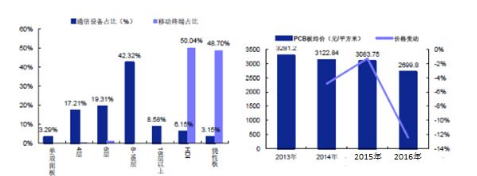
5G winds and waters, China’s initiative to speak has significantly improved
From 1G to 5G, the upgrade of communication technology: the upgrade of each generation of communication technology has brought revolutionary changes to the terminal products, redefining the products, and driving the reconstruction and great changes of the entire industry chain. 1G: Frequency Division Multiple Access (FDMA), which only provides analog voice services, is open in the era of mobile phones; 2G: Main Time Division Multiple Access (TDMA), which provides digital voice and low-speed data services, and browses text pages to become daily functions; 3G: Code division multiple access (CDMA), which supports multimedia data services, peak rate from 2Mbps to tens of Mbps, and the experience of browsing pictures increases; 4G: Orthogonal Frequency Division Multiple Access (OFDMA), which can support various mobile broadband data services, peak The speed of 100Mbps to 1Gbps, browsing video becomes possible; 5G: user experience rate, connection density, end-to-end delay, peak rate, etc., is expected to be combined with VR, AR technology to redefine terminal products, resulting in fundamentality in terms of dimensions Promote and bring people into the 3D era.

The core of the upgrade from 1G to 5G communication technology is to increase the wireless transmission rate: 1. Use the millimeter wave band and carrier aggregation technology to increase the spectrum bandwidth; 2. Increase the spectrum utilization by increasing the number of antennas by using MIMO technology. The 5G capacity is about 1000 times that of 4G, and the 5G peak rate is about 10Gbps~20Gbps. During the 2G to 5G upgrade, the phone needs to be backward compatible. Therefore, 2G mobile phones only need to support 4 frequency bands, 3G needs at least 9 and 4G increases to 41. According to Skyworks, 5G will add more than 50 frequency bands. By increasing the number of antennas, MIMO technology can increase spectrum utilization and increase communication speed under certain bandwidth conditions. The higher the frequency, the smaller the antenna volume, and the higher the frequency of the 5G frequency band, especially the millimeter wave band. It is more convenient to integrate the antenna array in the mobile phone terminal, and MIMO is perfectly matched with the beamforming technology.

Just recently, the 3GPP Plenary Session of the International Organization for Standardization officially approved the freezing of the fifth-generation mobile communication technology standard (5G NR) independent networking (SA) function. The 5G industry began a comprehensive sprint phase, which also provided a first-mover advantage for China's PCB industry. . In September 2017, China has already faced the test of the third phase test, and fully started the construction of the 5G test environment. It is expected that the transmission construction will be completed by the end of the year. China Unicom plans to conduct 5G trial commercial deployment in the country in 2019.
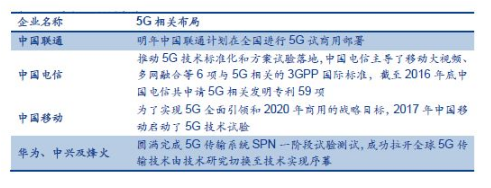
5G era, communication PCB board potential is extraordinary
According to Prismark data, the proportion of communications in the field from 2009 to 2016 increased significantly, from 22% to 29%, and gradually replaced computers as the largest field of PCB applications. With the rapid development of communication technology and the commercialization of 5G in the future, PCBs are The application of the communication field will be further deepened. In the future growth of the PCB industry, in addition to automotive electronics and new energy vehicle catalysts, 5G applications are also potential. The 5G era will affect the future development of the entire communications industry and the consumer electronics industry. With the advancement of 5G, the frequency band needs more RF components, and the increase in the number of RF front-end devices has increased the demand for PCBs. At the same time, high-speed and large-capacity have become the development trend of the PCB industry, and more stringent requirements are placed on the frequency and number of layers. With high-speed PCB layers of more than 40 layers, industry technology will be further differentiated and refined. OFweek expects that in the 2019, the PCB industry will usher in revolutionary innovation, and the entire industry chain will undergo tremendous changes.
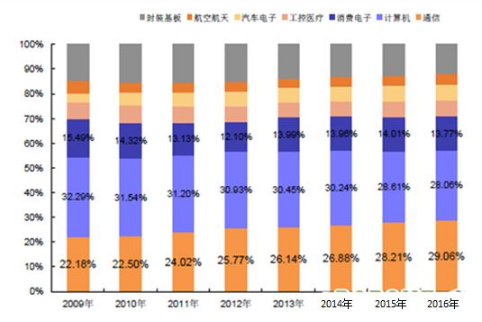
Analysis of E-PCB application field from 2009 to 2016
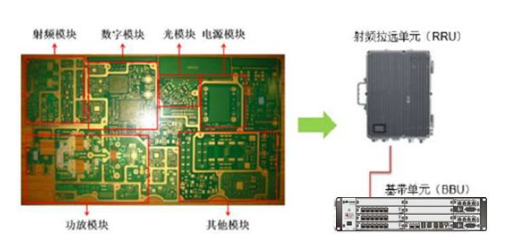
PCB products for wireless communication base stations
We reviewed the past two upgrades of communication technology, the capital expenditure of the three major operators, and the output of mobile communication base station equipment: In 2009, China's telecom industry restructuring completed 3G network construction success, wireless base stations, transmission equipment and network equipment and other communication equipment. The output has increased significantly, the total capital expenditure has increased significantly to 318 billion yuan; the 4G license was issued at the end of 2013; the 4G network was gradually popularized in 2014; the 4G investment peak in 2015, the capital expenditure reached 438.6 billion yuan, which drastically boosted the base station antenna and filter. Market; 2016 and 2017 belong to the late stage of 4G peak investment, and the capital expenditure of operators declined. In 2018, we maintained a relatively optimistic attitude. China Mobile announced that the investment budget for cellular IoT base stations in 2017-2018 will be 39.5 billion yuan. At the same time, China Unicom will raise funds of 70 billion yuan. The 5G era is expected to open a new round of investment boom, when base station antennas and filters are expected to usher in high-speed growth again.
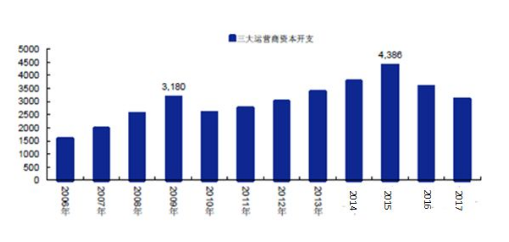
2006-2017E three major operators annual capital expenditure (100 million yuan)
The PCB requirements in the communication field are divided into subdivisions such as communication devices and mobile terminals. Communication devices are mainly used for communication infrastructures for wired or wireless network transmission, including communication base stations, routers, switches, and the like. Communication equipment mainly uses high-layer PCB boards, of which 8-16 layers account for about 42%, and mobile terminals mainly use HDI and flexible boards. Domestic communication PCB board manufacturers mainly rely on Hudian shares and Shennan circuit. In the first half of 2016, Shennan Circuit realized main business income of 1.354 billion yuan, gross profit margin was 18.59%, and Hudian shares realized revenue of 1.394 billion in the first half of 2017. Yuan, the gross profit margin was 17.86%. Hudian shares said that although the peak period of 4G construction has passed and 5G is not yet mature, the company's corporate communication board business still maintains steady growth. In the future, with the maturity of 5G technology and China's leading position, domestic leading PCB board companies are expected to usher in a new wave of development.
